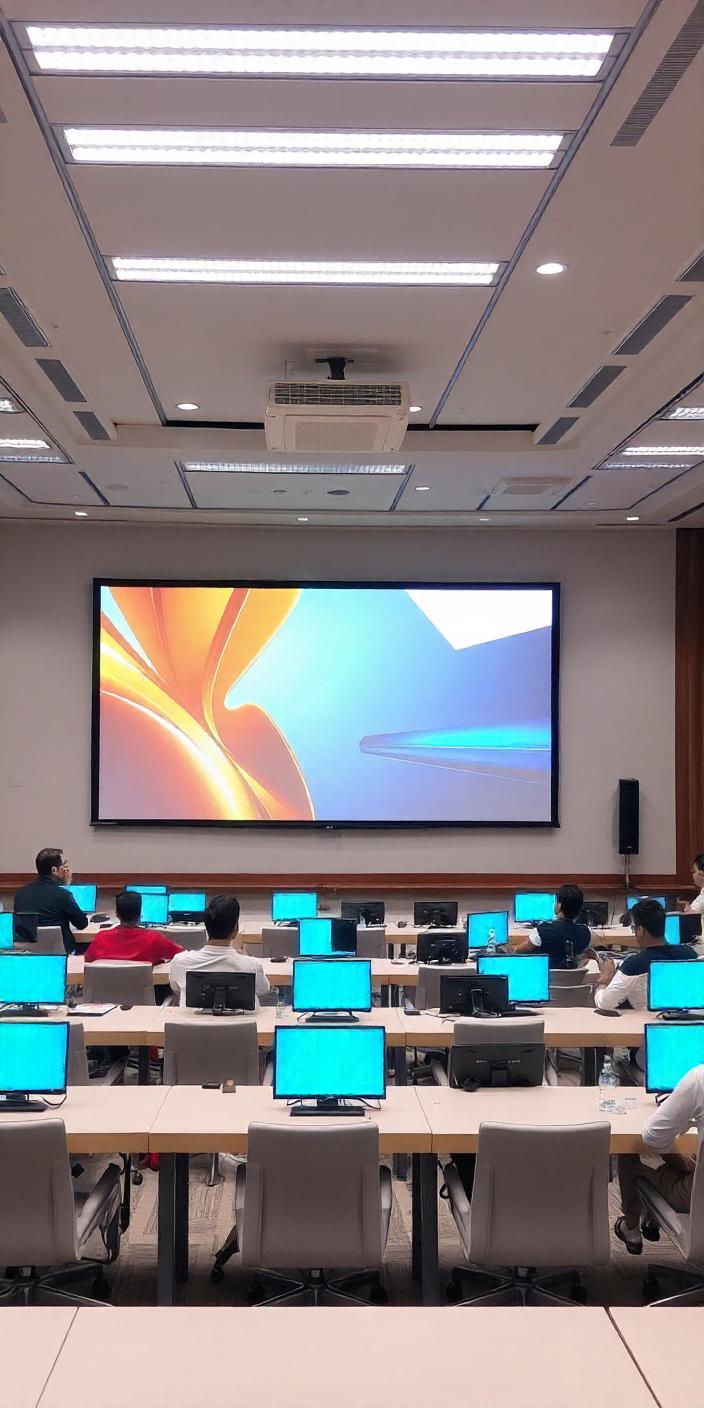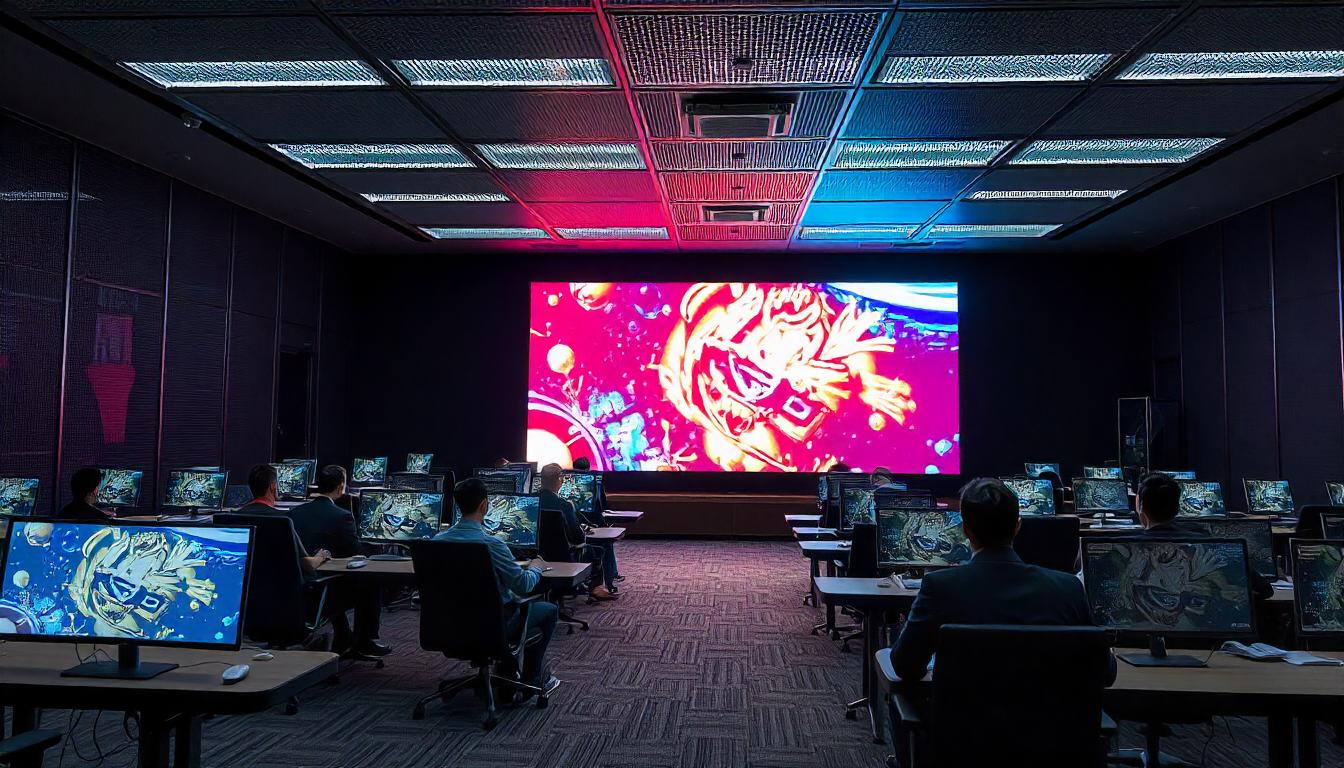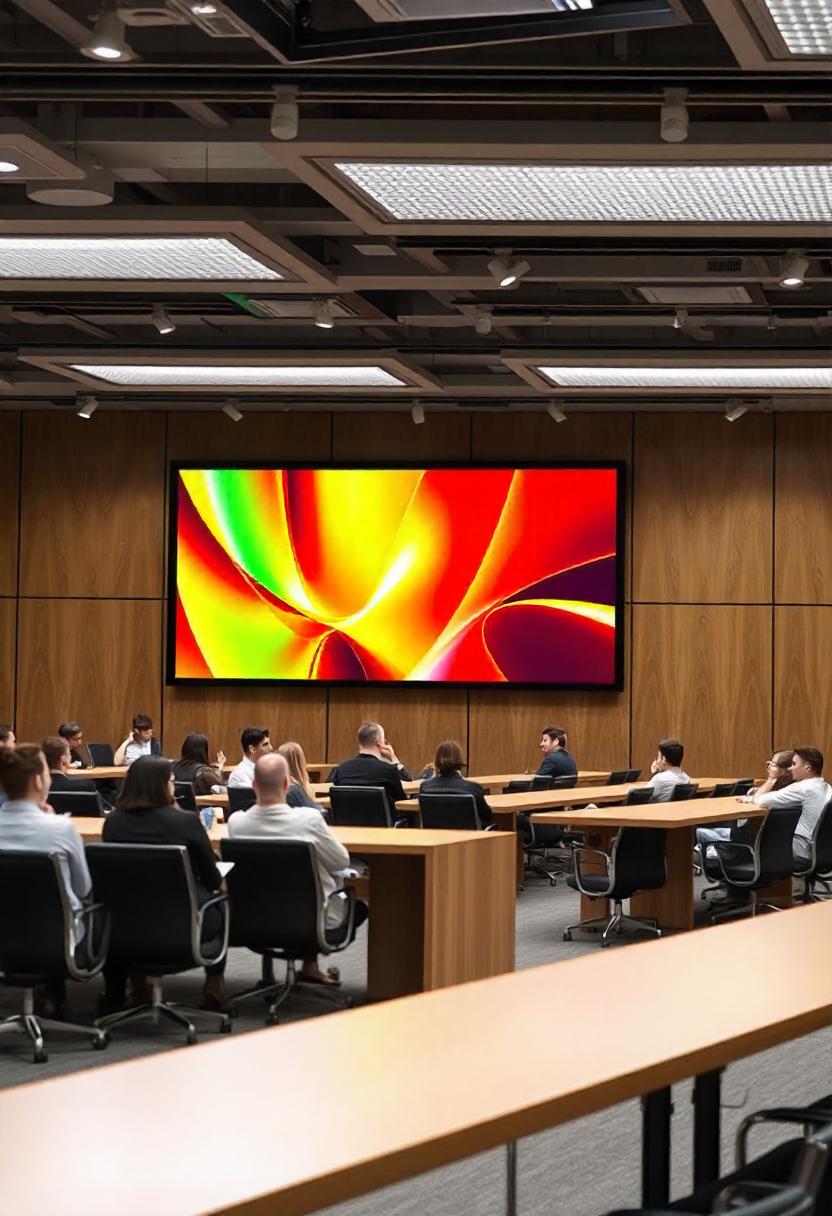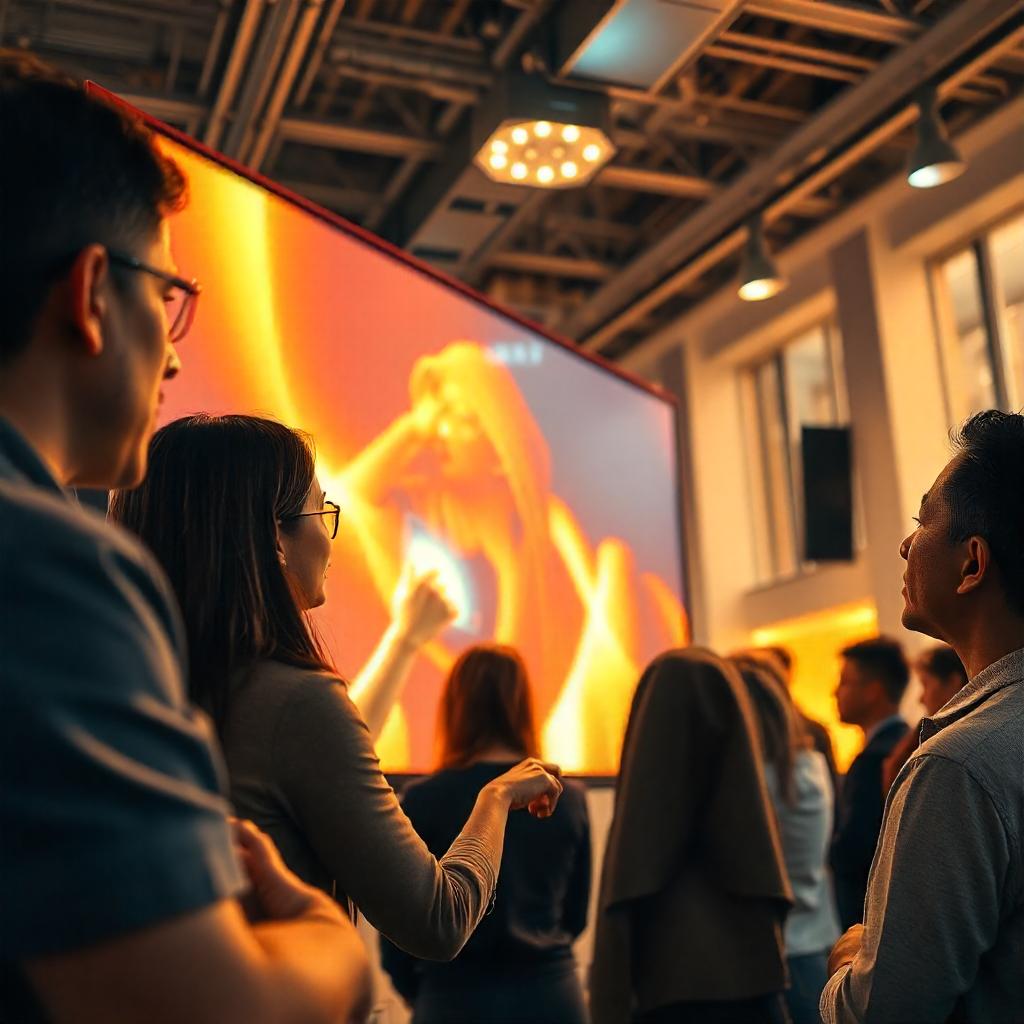- Home
- About Us
- Industries
- Agritech & Smart Farming
- Aquariums & Zoos
- Art & Cultural Exhibitions
- Automotive & Transportation
- Broadcasting & News
- Construction & Real Estate
- Corporate & Offices
- Cultural Heritage & Preservation
- Cybersecurity Operations
- Digital Content Creation & Media
- E-commerce & Online Retail
- Education
- Energy & Utilities
- Entertainment & Media
- Entertainment Arcades & Amusement
- Environmental Monitoring
- Event Management & Conferences
- Fashion & Apparel Retail
- Fashion Retail & E-commerce
- Finance & Banking
- Financial Trading & Stock Exchanges
- Fitness & Wellness
- Food & Beverage
- Food Processing & Manufacturing
- Gaming, Casinos, & Hospitality
- Government & Public Spaces
- Healthcare
- Hospitality & Event Venues
- Insurance
- Legal & Judicial
- Libraries & Community Centers
- Logistics & Supply Chain
- Luxury Cruise & Maritime
- Manufacturing & Industrial
- Meteorology & Climate Research
- Military & Defense
- Mining & Extraction
- Museums & Cultural Centers
- Non-Profit Organizations
- Oil & Gas Industry
- Professional Training & Development
- Public Health & Awareness
- Public Parks & Recreation Areas
- Public Safety & Law Enforcement
- Public Transportation
- Rehabilitation Centers
- Religious & Worship Spaces
- Renewable Energy
- Retail & Shopping Malls
- Retail Banking
- Security & Surveillance
- Social Media & Digital Marketing
- Sports & Stadiums
- Smart Cities & Urban Planning
- Supply Chain & Inventory
- Television & Film Production
- Travel & Hospitality
- FAQ
- Contact Us
- Home
- About Us
- Industries
- Agritech & Smart Farming
- Aquariums & Zoos
- Art & Cultural Exhibitions
- Automotive & Transportation
- Broadcasting & News
- Construction & Real Estate
- Corporate & Offices
- Cultural Heritage & Preservation
- Cybersecurity Operations
- Digital Content Creation & Media
- E-commerce & Online Retail
- Education
- Energy & Utilities
- Entertainment & Media
- Entertainment Arcades & Amusement
- Environmental Monitoring
- Event Management & Conferences
- Fashion & Apparel Retail
- Fashion Retail & E-commerce
- Finance & Banking
- Financial Trading & Stock Exchanges
- Fitness & Wellness
- Food & Beverage
- Food Processing & Manufacturing
- Gaming, Casinos, & Hospitality
- Government & Public Spaces
- Healthcare
- Hospitality & Event Venues
- Insurance
- Legal & Judicial
- Libraries & Community Centers
- Logistics & Supply Chain
- Luxury Cruise & Maritime
- Manufacturing & Industrial
- Meteorology & Climate Research
- Military & Defense
- Mining & Extraction
- Museums & Cultural Centers
- Non-Profit Organizations
- Oil & Gas Industry
- Professional Training & Development
- Public Health & Awareness
- Public Parks & Recreation Areas
- Public Safety & Law Enforcement
- Public Transportation
- Rehabilitation Centers
- Religious & Worship Spaces
- Renewable Energy
- Retail & Shopping Malls
- Retail Banking
- Security & Surveillance
- Social Media & Digital Marketing
- Sports & Stadiums
- Smart Cities & Urban Planning
- Supply Chain & Inventory
- Television & Film Production
- Travel & Hospitality
- FAQ
- Contact Us

Professional Training & Development

Uses Of Led Display For Professional Training & Development
Active LED displays are becoming an essential tool in professional training and development centers, providing dynamic and interactive learning experiences that can improve retention, engagement, and overall training effectiveness. These displays help convey complex information visually, engage participants with real-time updates, and offer the flexibility to update content as needed for various training modules.
Benefits of Active LED Displays in Professional Training and Development Centers
- Real-Time Content Delivery:
LED displays enable the immediate delivery of multimedia content such as videos, presentations, and real-time data updates, ensuring that all learners are on the same page during training sessions. - High-Quality Visuals:
With superior resolution, LED displays offer crisp and vibrant visuals that enhance the clarity of images, graphs, and charts, making complex information easier to understand. - Increased Engagement and Interaction:
Interactive features, such as touchscreen capabilities, allow trainers and trainees to engage directly with the content, conduct live polls, or answer questions in real time. - Customizable Content:
Training centers can easily update content to match different training modules, ensuring that materials are relevant, timely, and tailored to specific learning objectives. - Flexibility in Content Format:
LED displays can showcase various content formats, including slideshows, videos, infographics, and live demonstrations, providing diverse methods to cater to different learning styles.
Applications of Active LED Displays in Professional Training and Development Centers
- Training Presentations and Modules
Purpose: To deliver training materials clearly and dynamically, ensuring that information is accessible to all learners.
Content Ideas:
- Interactive Presentations: Use dynamic presentations with graphics, animations, and video content to enhance learning and engagement.
- Training Progress Updates: Display progress bars, key takeaways, and session objectives to help participants track their learning journey.
- Multimedia Learning: Incorporate videos, simulations, and visual aids to reinforce concepts and improve comprehension.
- Real-Time Feedback and Assessment
Purpose: To gather feedback instantly from learners and provide them with immediate results to improve understanding and engagement.
Content Ideas:
- Interactive Quizzes and Polls: Display real-time results of quizzes or polls to assess learners’ understanding and engage them in discussions.
- Skill Assessments: Show live data on participant performance, such as completion rates or scores, encouraging healthy competition and participation.
- Instant Corrections: Display immediate feedback for exercises or tasks to guide learners through errors and improve their skill sets.
- Gamification of Training
Purpose: To engage learners through game-like mechanics, making learning more fun and interactive.
Content Ideas:
- Leaderboard Displays: Show scores and rankings for participants to foster friendly competition and motivate learners.
- Reward Systems: Display achievements, badges, or certificates as learners complete training milestones.
- Challenges and Quizzes: Incorporate live challenges and quizzes on the LED screen that trainees can participate in during the session.
- Scheduling and Event Management
Purpose: To keep participants informed about session schedules, upcoming modules, and breaks.
Content Ideas:
- Session Timetables: Display upcoming sessions, training agendas, and timelines to help attendees plan their day.
- Important Announcements: Use LED screens to communicate essential updates, such as session changes, guest speakers, or special announcements.
- Event Reminders: Provide reminders about deadlines, submission dates, or upcoming assessments to keep participants on track.
- Interactive Learning Stations
Purpose: To provide dedicated spaces for hands-on, interactive learning and collaborative activities.
Content Ideas:
- Interactive Whiteboards: Use LED touchscreens for group activities, brainstorming sessions, or collaborative problem-solving tasks.
- Virtual Simulations: Run simulations or virtual reality (VR) environments on LED screens, allowing learners to practice scenarios in a safe, controlled environment.
- Workshops and Case Studies: Display case studies, scenarios, or interactive worksheets to be completed in small groups or individually.
- Digital Signage for Facility Management
Purpose: To display critical information and guide participants during their visit.
Content Ideas:
- Room and Location Directories: Display maps, room assignments, and event locations to help participants navigate the facility easily.
- Emergency Alerts: Use screens to display emergency announcements or evacuation procedures.
- Interactive Building Layouts: Provide interactive touchscreens for participants to explore training center facilities and learn about available resources.
- Remote Learning and Virtual Training
Purpose: To offer virtual learning experiences for remote participants and integrate online modules with in-person training.
Content Ideas:
- Live Streaming Sessions: Display live streams of training sessions for remote participants to join in real-time.
- Virtual Workshops: Use video conferencing tools integrated with LED displays to facilitate virtual workshops, seminars, and guest lectures.
- Collaboration Tools: Incorporate video conferencing and chat features directly onto the LED screen to allow remote collaboration with on-site participants.
- Data Visualization and Analytics
Purpose: To present complex data in a visually accessible and understandable format for better decision-making.
Content Ideas:
- Real-Time Performance Dashboards: Display key performance metrics, training progress, and outcomes to track learner development.
- Charts and Graphs: Show detailed performance analysis and results in visual formats to simplify data comprehension.
- Trends and Insights: Highlight patterns and trends based on assessment results, helping trainers and learners identify areas of improvement.
- Career Development and Job Opportunities
Purpose: To assist with career advancement and skill development through ongoing learning and exposure to industry trends.
Content Ideas:
- Job Listings and Opportunities: Display job openings, internship opportunities, or industry trends that participants can explore after completing training.
- Career Advice and Resources: Show video tutorials or articles offering advice on career development, interview preparation, or networking tips.
- Alumni Success Stories: Showcase testimonials or success stories from previous training participants who have advanced in their careers.
- Branding and Marketing
Purpose: To promote the training center’s services and build its brand recognition.
Content Ideas:
- Promotional Videos: Use LED screens to show promotional content about the training center, upcoming courses, and available certifications.
- Success Metrics: Display success stories, testimonials, or course completion rates to attract new learners.
- Social Media Feeds: Integrate social media feeds into the displays to showcase real-time updates, student posts, or reviews.
Features
- List Item
- List Item
- List Item
- List Item
Advantages
- List Item
- List Item
- List Item
- List Item

Placement Tips for LED Displays in Training Centers
- Central Locations: Place LED displays in high-traffic areas such as training halls, reception areas, and break rooms to maximize visibility.
- Interactive Zones: Position interactive displays in designated learning areas or stations where learners can access content, engage with materials, and participate in activities.
- Classroom Visibility: Ensure that the displays are visible from every seat in the classroom or seminar room to make sure all participants can follow along easily.
- Room-Specific Displays: Use smaller, room-specific screens to display content related to the session being conducted in that particular room, improving context relevance.
Conclusion
Active LED displays in professional training and development centers create an interactive, visually engaging, and efficient learning environment. By incorporating dynamic content delivery, real-time feedback, and engaging features like gamification, these displays not only enhance the learning experience but also improve operational efficiency. Whether for in-person, remote, or hybrid training sessions, active LED displays help deliver a more modern, engaging, and effective training experience for both trainers and learners.

illuminits LED Walls?
Technology
There are three primary LED video wall technologies: ultra-narrow bezel LCD, rear-projection cubes, and direct-view LED displays. Ultra-narrow bezel LCD is the most cost-effective option.
Size
The great thing about illuminits video walls is that they are modular, so you can get them in any size or aspect ratio you want.
Support
The heavier the video wall system becomes, the more panels there are. This puts additional strain on the infrastructure that supports it. illuinits offers the best in-time assistance.
Service
Even high-definition video walls can have problems. This can be a minor or major issue. As a result, Aero provides a variety of comprehensive service packages that ensure minimal downtime at a low cost. Types Of LED Displays



